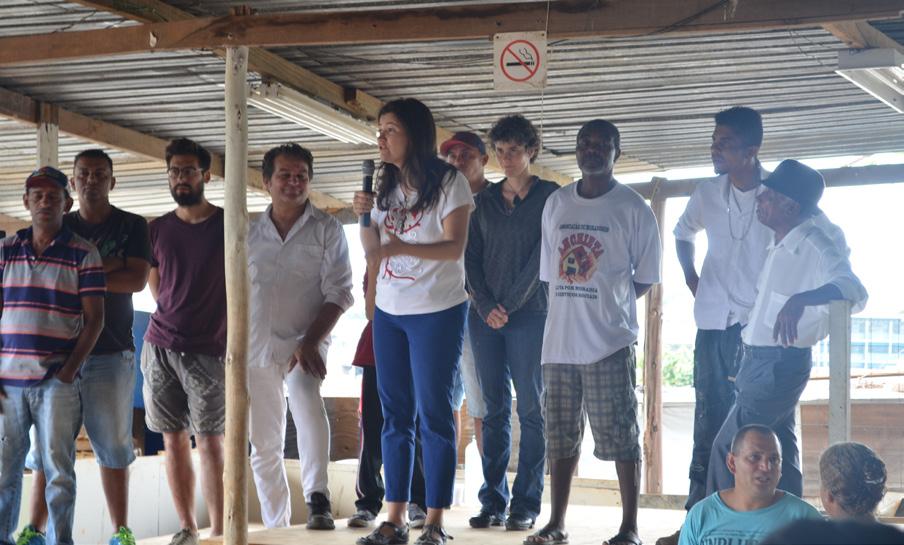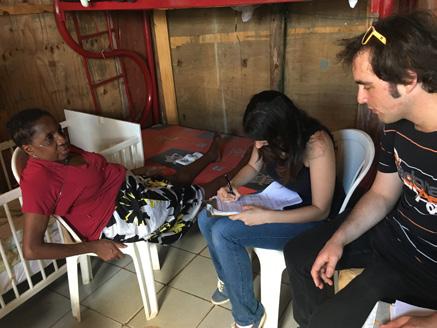
2 minute read
Method Limitations
and can help the community make claims about increased environmental stewardship.
The Occupation residents that the Taubman College Team had the opportunity to interact with were welcoming and willing to engage with the team. They extruded openness and availability during door-to-door surveys, direct observation, and the large community meeting. Futhermore, social events such as lunch and dinners with the Association coordinators, provided an opportunity to check-in or follow up after the day’s activities. Through these invaluable conversations, the Taubman Team was able to acquire additional information and receive feedback on potential recommendation proposals.
The Association coordinators volunteered to accompany groups of students in the field as students carried out research methods for long hours each day. Everyday three to four fluent translators were present, assisting nonPortuguese speakers to communicate with the Association coordinators and Occupation residents. The cooperation of the community combined with the help of the translators allowed Taubman Team students to collect data more effectively than expected
METHOD LIMITATIONS
There are limitations to the data collection process and findings that should be noted. First, the short amount of time spent in Ocupação Anchieta restricted how many surveys, direct observation checklists, informal conversations, and relationship building with the clientpartner and residents could take place. Secondly, language was a moderate barrier. The majority of Taubman Team students could not communicate in Portuguese, and most of the coordinators and residents could not
36 Mapping Exercise with Community.
speak English. The translators were extremely helpful. It would have been beneficial to have more bilingualism amongst the students. A few students and faculty had some level of proficiency in Portuguese or Spanish and could use these language skills to communicate with the community. For instance, when students could not converse and there were no translators available, students relied on body language, pre-recorded audios by Portuguese speaking individuals, and voice recording so that information could be translated upon our return.
In the field, Taubman College Team adjusted the direct observation questions because we realized that some of the checklist items were not relevant given that the answers were identical for the entire site. Therefore, we dropped three questions about stormwater after the first day. Furthermore, almost all students engaged in the same direct observation activity. Despite the fact that all students received the same training and instructions, the team did not test for inter-observer reliability. Therefore, we cannot assess the degree of human error and inconsistency of observations. In the future, scholars and practitioners using this tool may consider a reliability assessment.
Although the community meeting was worthwhile and useful, there were a couple of

37 Faculty Members Address Residents at Community Meeting.
limitations that should be mentioned. Despite the two-hour meeting, Taubman Team only had time to provide a basic overview of our field observations and receive feedback from residents on the general direction of the themes for potential recommendations targeting existing problems. Also, during the break-out sessions, the maps could have been more user friendly, which would have facilitated precise feedback at the theme tables. Most of the 200+ meeting attendees did not take part in the small group mapping activities, but participated in the general meeting by speaking, show of hands, and clapping or screaming “yes” and “no” to the information conveyed by the students.

38 Resident Survey.






